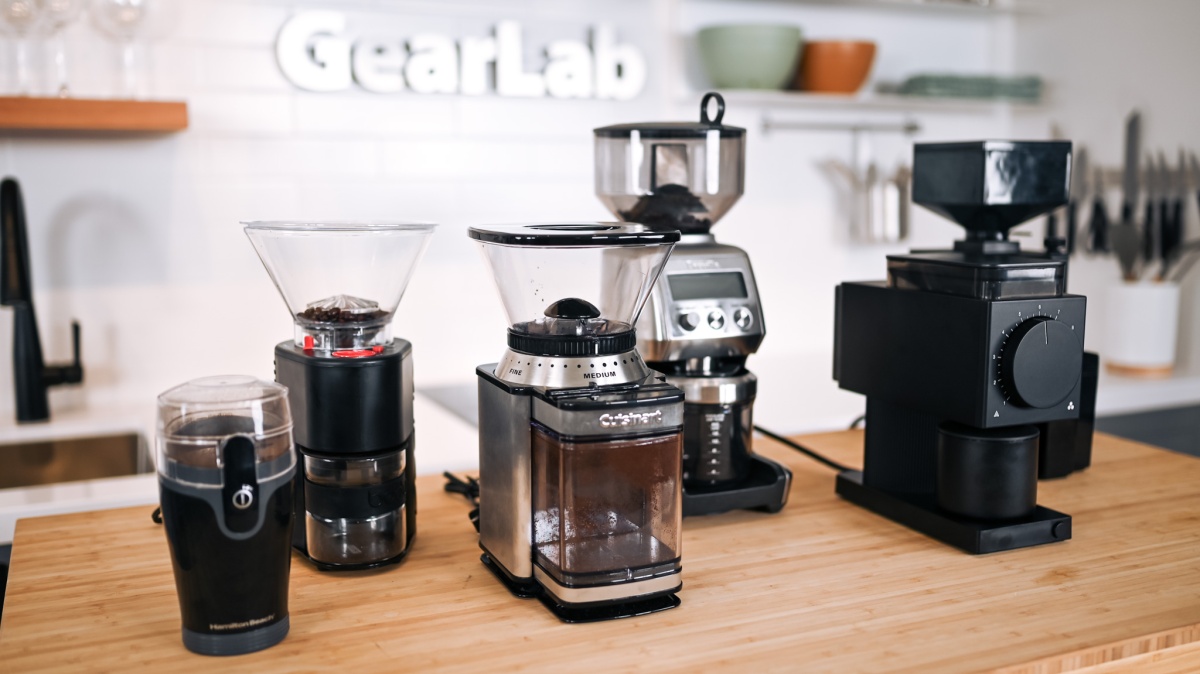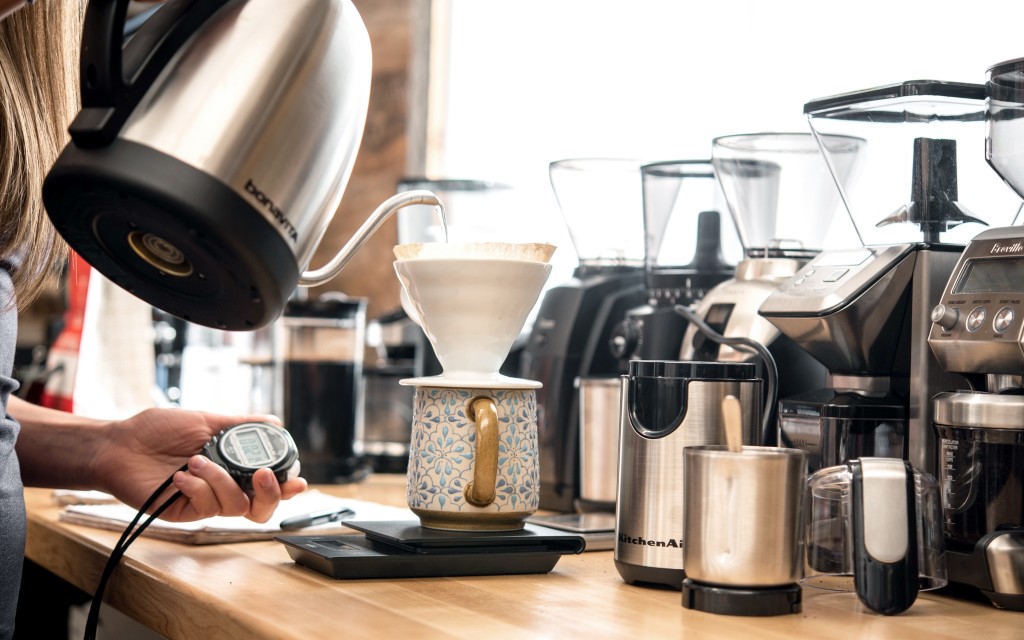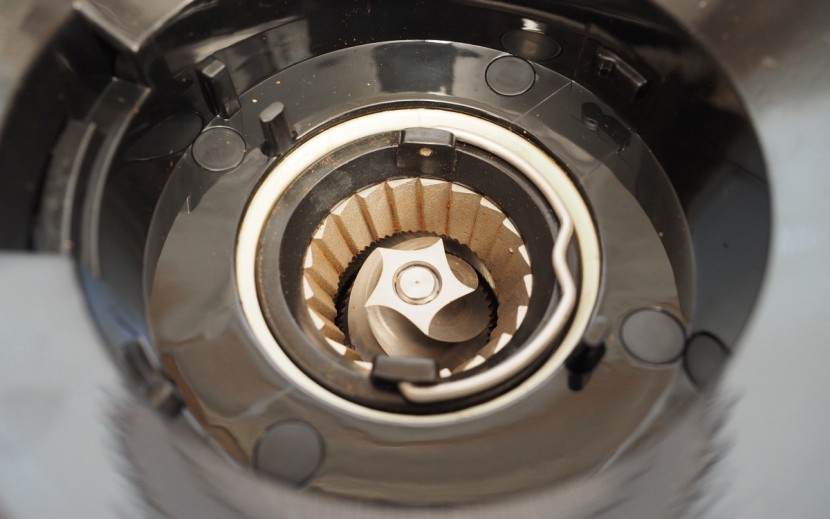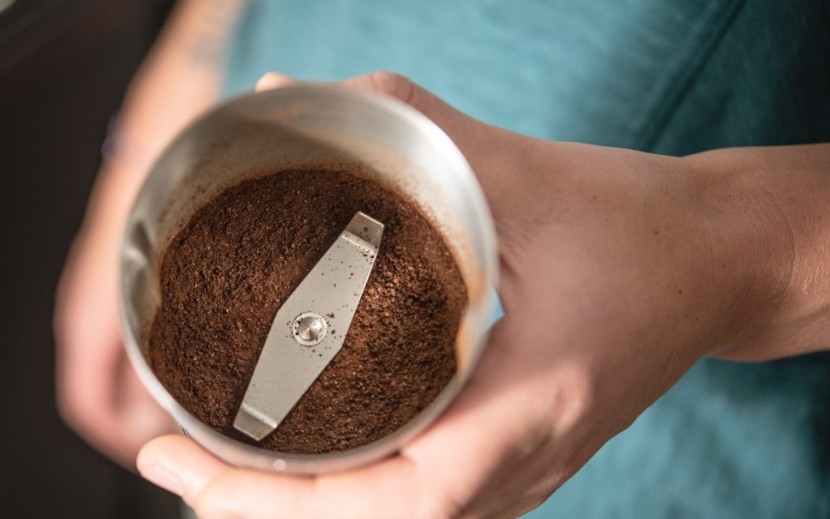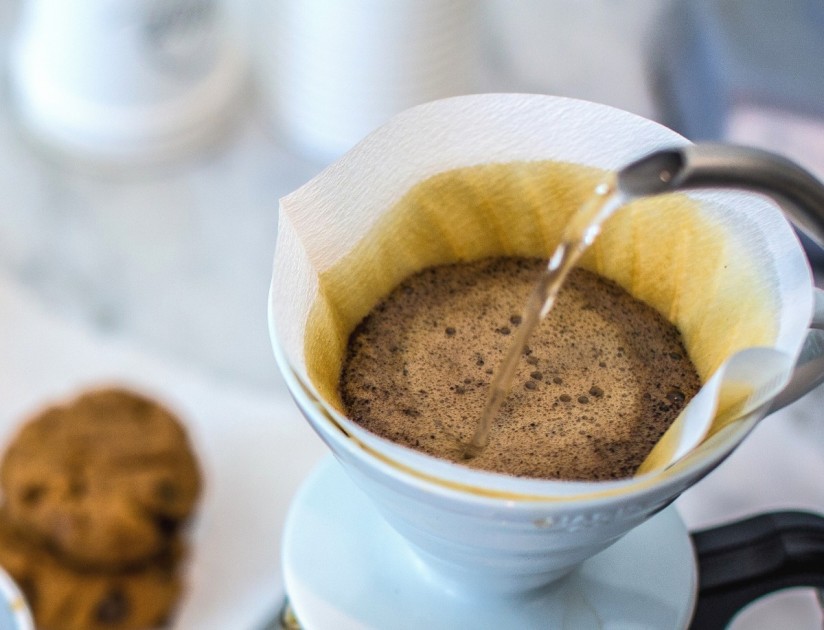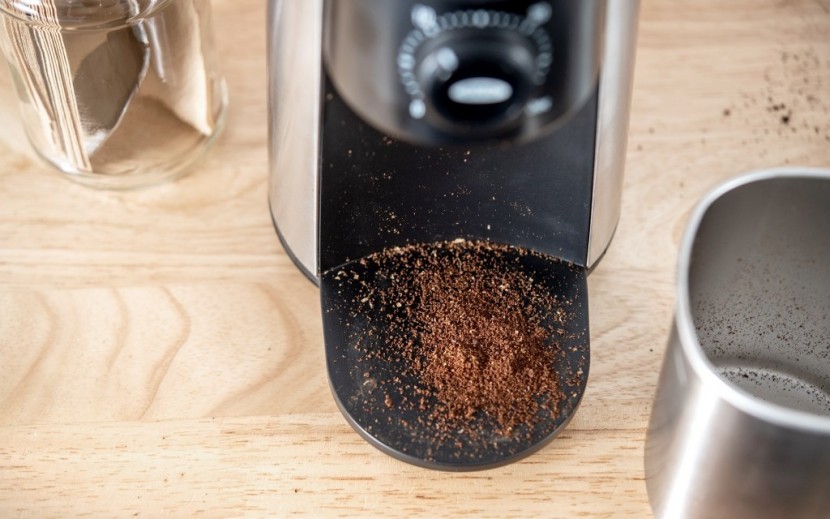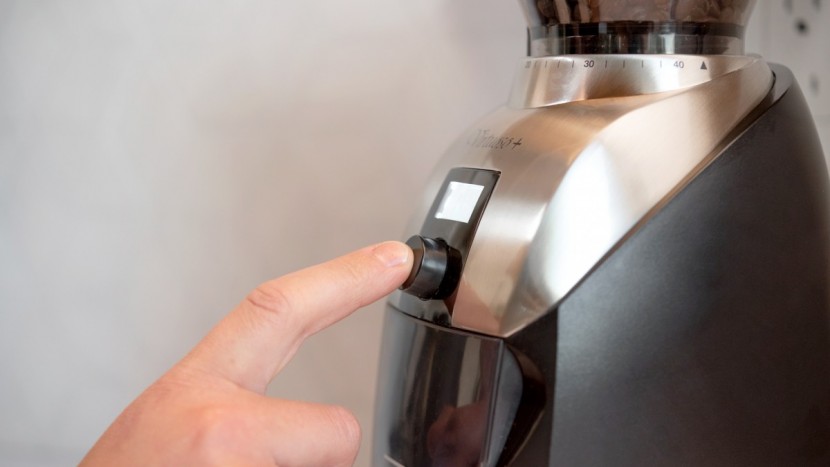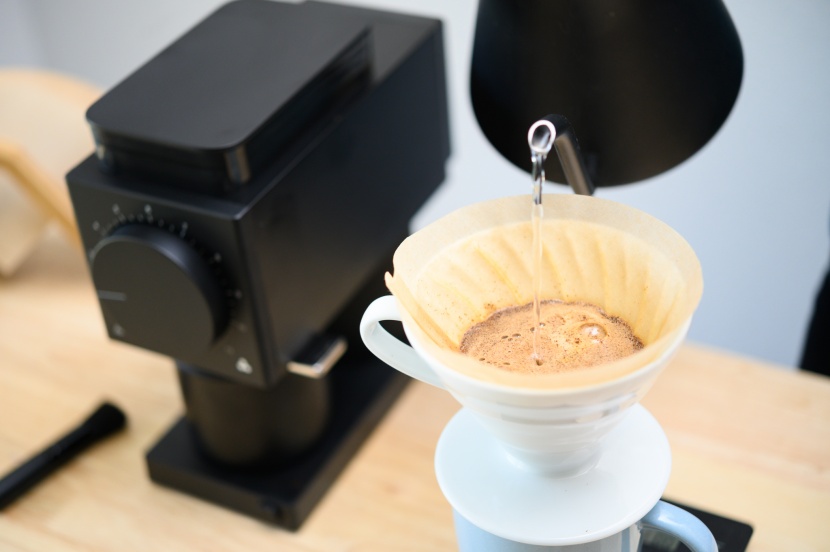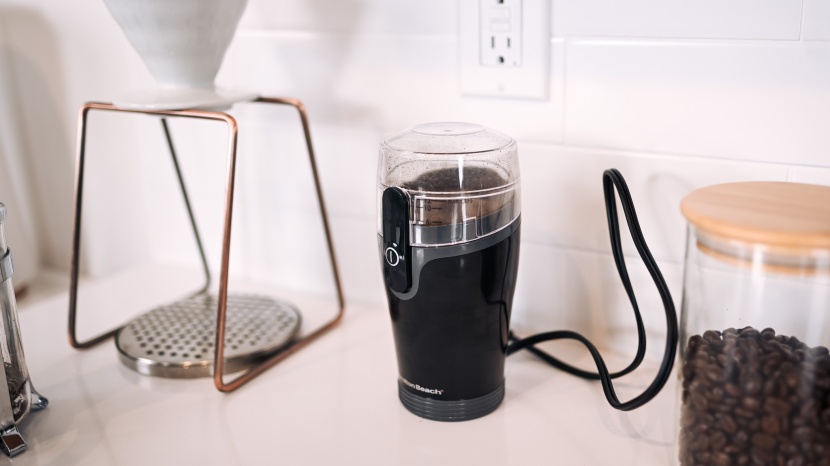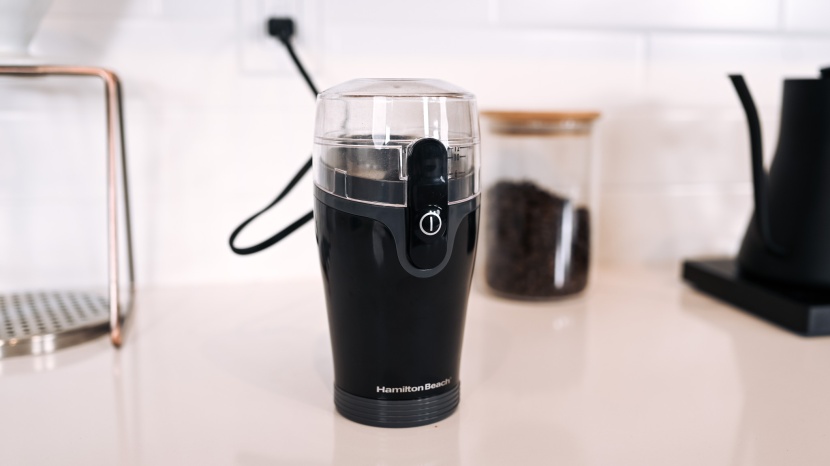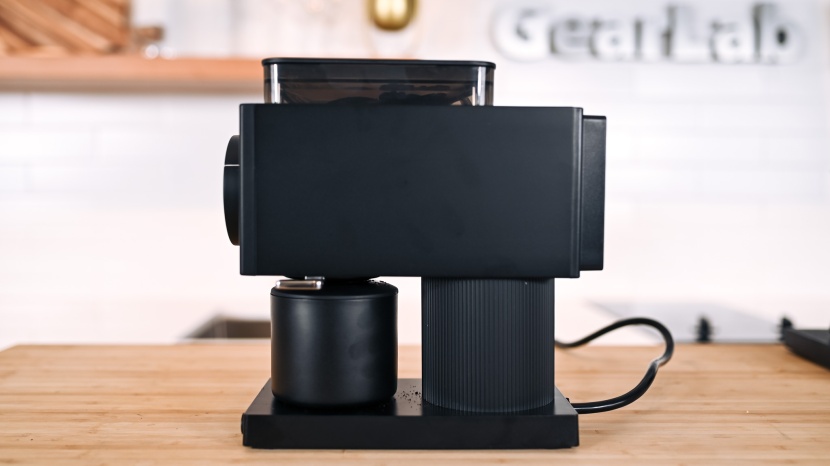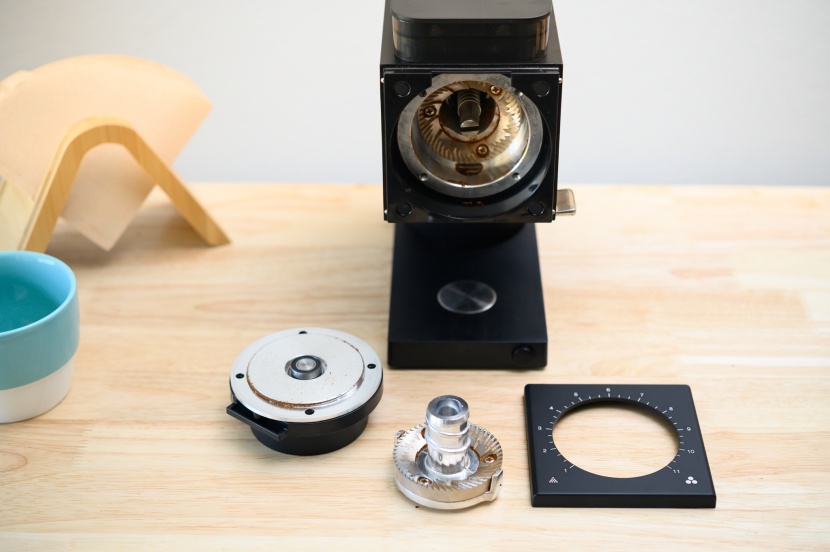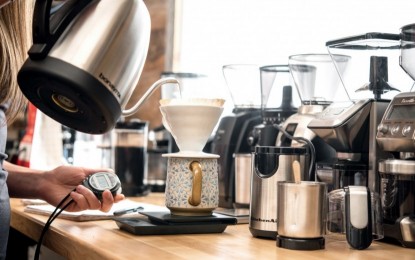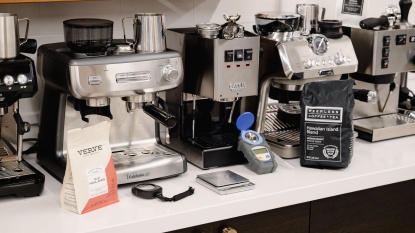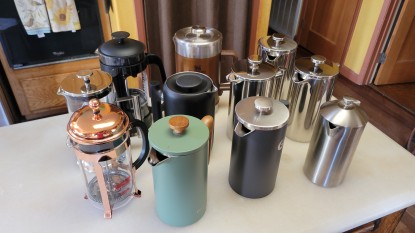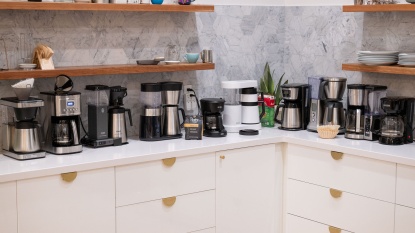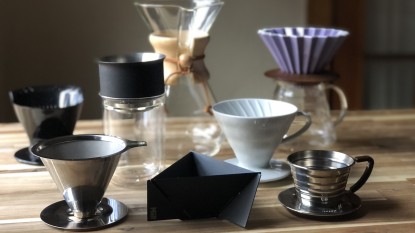Why You Need a Coffee Grinder
Coffee beans don't brew themselves. One of the essential steps in releasing a coffee's full flavor potential in your morning cup is grinding your coffee fresh, right before each brew. Additionally, sometimes a specialty coffee may not be available pre-ground. So, whether you've been gifted whole beans or are tired of using the communal grocery store grinder only to have the grounds coated with flavoring from every coffee ground before yours, owning a good grinder is key to making the best coffee. The biggest benefit of owning a coffee grinder is that it allows you to grind and brew to the specifications of your brewing style while best highlighting the coffee's unique nuances.
Bottom line: fresh ground coffee makes a better-tasting brew. Yes, you can get coffee pre-ground or a “pod” that brews at a touch of a button, but you are sacrificing quality. Pre-ground coffee starts reducing the freshness of the bean, which correlates to muting the full flavor. Pre-ground may still be the status quo, but we assume that you found this article to rise above.
Choosing the Right Coffee Grinder
Let's face it, coffee is a huge industry, and the market for related equipment is equally gigantic. To help, we've laid out a simple, step-by-step decision-making process to eliminate confusion and help you find the grinder that will best suit your needs.
Step 1: To Burr or Not to Burr
The most important decision to make when choosing a coffee grinder is whether you're going to get a burr or a blade model. We go into detail about burr and blade grinders later in this article, but here are the basics: burr grinders can be costly (usually starting around $100); however, they produce a much more consistent grind giving you a better chance at optimal extraction. A good extraction equates to optimal flavor in your cup. Blade grinders are generally less expensive (starting around $20) and may have a smaller footprint. However, the blade grinder chops your beans verse grinding them, the results being inconsistent particle sizes. So there's a good chance you'll get very a different extraction from cup to cup with a blade grinder.
What the decision comes down to is whether or not you're willing to pay more for quality. If you want to be sure you're getting the most you can out of your coffee, want repeatable results, and don't mind paying a bit more to do so, a burr model is the best option. On the other hand, if you're not too fussy about controlling all of the brewing variables for your coffee and want an inexpensive way to grind some beans, a blade grinder might be a better choice.
Step 2: How Much Do You Care About Grind Consistency?
If you want to make sure your grind is reasonably consistent, pretty much any burr grinder that we reviewed will do. However, if you're like us and want to nerd out about your coffee and get as close to the ideal grind as possible, you'll want a top-quality burr grinder. Our grind consistency tests delved into every nook and cranny possible, looking at each machine's performance across a wide grind size range, within multiple brewing methods, and consistency between doses. So, if you're looking for the most consistent, high-quality grind possible, you can use our grind consistency scores as a guide.
Step 3: What's Your Preferred Brewing Method?
Different brewing methods require different grind sizes, with French press and espresso generally representing the coarse and fine ends of the spectrum and pour-over falling somewhere in the middle. Unfortunately, sometimes machines that do very well in one grind size do poorly in others. For example, one of our favorite grinders crushed our grind consistency testing for everything except the coarse grind. This model is an excellent choice for most coffee drinkers but a poor choice if 90% of your coffee beans end up in a French press or used for cold brew. We've been sure to note if any grinders have these kinds of weak points in their reviews, so make sure to double-check that your preferred brewing method doesn't fall into a grinder's list of limitations.
Step 4: Consider Cleanliness
Apart from the consistency of your grind, the first thing you'll likely notice about a grinder is how much you need to clean up after using it. Some models create a lot of static, causing grounds to stick to the machine and grounds bin and then spontaneously dump onto the counter. Others tend to hang onto grounds inside the grind chute, then seemingly wait until you've removed the bin to spill out. And some tend to miss the grounds bin and shoot coffee shrapnel all about while grinding. Still, others manage to negate most of these problems, leaving your morning routine as clean and tidy as possible.
We've closely examined all of our grinders' cleanliness attributes through hundreds of rounds of use. Check out our cleanliness scores if you want to get an idea of how much and what type of mess (or lack thereof) you can expect from each machine.
Step 5: Consider Ease of Use
All grinders function the same way: place the beans in the hopper, grind the beans into the bin, and pour the grounds into a brewer. Where grinders can significantly differ is how they choose precisely the amount of coffee you want to grind. For example, some machines have built-in scales, letting you select your dosage by weight. Some grinders have timers that require you to figure out exactly how long it takes to grind your desired amount of coffee. Others have preset cup settings that you can fine-tune to your liking. Some models make it a bit easier to control all of these features than others.
Here again, we've relatively ranked each machine's ease of use based on our extensive experience using them. While none of the grinders presented a steep learning curve, some are certainly better than others in terms of intuitiveness.
Step 6: Is Noise a Factor?
We don't think most people need to consider noise when shopping for a coffee grinder. In general, you won't be running the grinder for more than a minute at a time, and we find that annoying noise is usually bearable if it will result in a better cup of coffee. However, if you have infants napping during your coffee time, or you're the first one awake, the sound emitted by your grinder becomes much more of a factor.
We spent hours listening to each device and subjectively ranking both the “annoyingness” and volume of each model, as well as objectively measuring the volume with a decibel meter. We awarded noise scores for each grinder so you can see how the noise emitted by each machine compare.
Burr vs. Blade
We already offered a fundamental overview of the differences between blade and burr grinders, but here is the nitty-gritty for those that want to know more.
Blade
Blade grinders can be pretty handy. We didn't review many blade grinders because the top grinders on the market are burr models. However, we did test a few of the most promising blade models because of their popularity, affordability, and conveniently small size.
Blade grinders have a compartment with a spinning blade on the bottom. To operate these devices, place your coffee (or spices!) inside the grinding chamber, lock the lid into place, and press a button to start. Stop the grinding process once you think you have a decent grind size for brewing. The downside of these grinders is that they lack precision. The inconsistency is partly in the guesswork of determining how long to grind. The other part of inconsistency comes from the various particle sizes the blades produce. The blade almost haphazardly chops your beans; some are ground into dust while others remain decent-sized chunks. The mix of different grind sizes makes for a less than ideal extraction as all the fine particles will be over-extracted, while the larger pieces will be under-extracted. Additionally, that ratio of fine to coarse particles is bound to be different every time you grind, meaning you're going to get a different cup of coffee every morning.
Because blade grinders inevitably grind in a somewhat random fashion, many people think you're better off getting pre-ground coffee than grinding fresh with a blade grinder; with pre-ground coffee, you're at least setting yourself up for a more even extraction. Therefore, our general opinion is that the main reason for getting a blade model is to gain access to coffees only available in whole bean.
Burr
Burr grinders offer a whole different set of benefits. They allow you to select a specific and repeatable grind size, you can store coffee in their hopper, and they usually give you an option of how much coffee to grind. For the most part, burr grinders also give you a much better extraction than a blade grinder when brewing due to the uniform grind size. However, most decent burr models carry price tags that reach the triple digits. But if you have the cash to spend, don't require something travel-friendly, and have the counter space to show off one of these models, then we highly recommend taking this route.
Burr grinders function by grinding coffee between two rotating burrs. The coffee grinds between gaps in the burrs and then exits through a chute and into the grounds bin. You can adjust how “tight” or “loose” this gap is to select a different grind size; the closer the burrs are to one another, the finer the grind will be. As a result, burrs give a more consistent grind than the “press 'n' guess” blade design. Precision is the main reason that burr grinders are superior to blade grinders. If you're looking to get the best possible expression of your coffee's flavor profile, a burr grinder is the best choice.
Conclusion
We hope this article has helped you decide what you want from a coffee grinder and exactly how you can get it. For a complete rundown of all the models we tested and how they ranked, check out our coffee grinder review. And if you want to nerd out about coffee even more, check out our article on how we did our testing. It delves into all the intricate tests we ran to find the best grinder for every situation.

